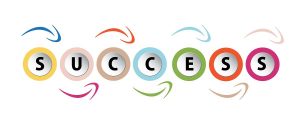
The Process SME project was initiated with the objective is to improve the competitiveness of SMEs serving the process industries by supporting the development of new advanced business models and building European partnerships. One of the key ways we are trying to achieve this is by developing a business modelling method for implementation of new advanced business models for process industry SMEs. The method is specifically targeted at capitalizing of new opportunities arising from digitalization and the trend of servitization where companies are increasingly moving from selling products to advanced service solutions consisting of both product and service components.
We can now report initial insights from the development of the method. The business model method has been developed based on diverse activities including: benchmark studies of academic and non-academic papers, interviews with leading process industry customer from mining, pulp and paper and steel industry and in-depth interviews and workshops with more than 50 SMEs from the Interreg Nord region. Through these activities specific requirements, suggestions and process steps for business model method has been captured and evaluated. The project team has worked extensively with trying to develop an method which would be customized to the SMEs from the north of Norway, Sweden and Finland and their challenges.
The initial idea for the proposed method will be to includes four phases which enables SMEs to significantly upgrade their business models. Table 1 provide brief insights into the different phases and specific activities which will be carried out in each phase.

Table 1. Suggested business modelling method for process industry SMEs
| Phase | Key activities |
| Phase 1: Opportunity analysis
|
This phase focuses on analysis of new business model innovation opportunities through a) identifying one or more new business model opportunity which builds on digitalization and/or servitization, b) opportunities are discussed within expert group to established a common understanding, and c) evaluate target customer segments and select opportunities to go forward. |
| Phase 2: Designing the value proposition
|
This phase focuses on designing an attractive value proposition towards a specific customer segment through a) finding the customer’s Job-to-be done and gain areas and pain points, b) analyze how SME products, services, capabilities and competitive advantages could create unique values and relive pain/create gain for the customer, and c) build the customer value proposition (CVP) and ensure value fit towards customer. |
| Phase 3: Developing a business model concept
|
This phase focus on designing a profitable business model by identifying gaps and proposing capability development through a) review changes required in key elements of current business model, b) evaluate feasibility of changes and adjust business model, and c) plan for implementing changes in key elements by developing new capabilities. |
| Phase 4: Evaluating refined business model concept
|
This final phase focus on Map risks for implementing new business model through a) identifying business model risks, b) ranking business model risks (likelihood and consequence), c) suggest mitigation activities and control mechanisms for the risks, and d) evaluate risks vs potential profits and consequences for existing business model. |
The business model method is currently undergoing review by project members from the different countries and external experts. After feedback and refinements the method will be used in collaboration with SMEs to evaluate its application and benefits. The project team members plan to test the business model method in 10 hand-picked SME from the Interreg Nord region.
Vinit Parida, Professor
Luleå University of Technology, vinit.parida@ltu.se
David Sjödin, Associate Professor
Luleå University of Technology, david.sjodin@ltu.se









